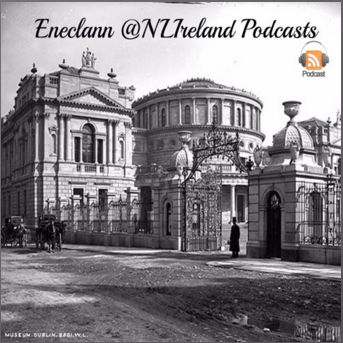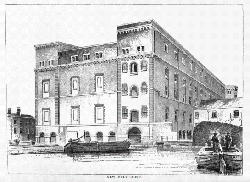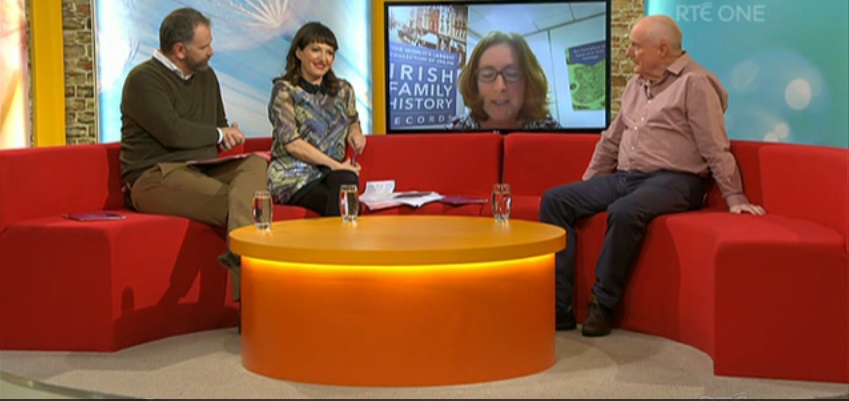Expert Workshops at the National Library of Ireland, February 2016. Aileen Wynne – Public speaking
19 April 2016Aileen Wynne Outline: The natural environment for genealogists and family historians is a library, study or archive. So how do we prepare when we have to give a presentation: at a society monthly meeting or conference? In this podcast Toastmaster Aileen Wynne shares winning strategies and handy tips in the art...

Summer Talks in the National Library of Ireland, 2015. Jayne Shrimpton: Family Photographs
19 April 2016Dating and Understanding Family Photographs This podcast explains how to date old family photographs using various techniques, including recognising photographic formats, dating mount styles, researching studios and dating fashion clues. It also covers the kinds of special occasions that prompted our ancestors to visit the photographer, such as marriage, christening...

PODCASTS
19 April 2016The Following are podcasts from our Expert Talks in The National Library of Ireland during the Summer of 2015. Liz Rushen:The migration of Irish women to colonial Australia by Dr Liz Rushen Gianpiero Cavalleri:The Irish DNA Atlas Ray Gillespie: The house on Bunion Hill: an Irish census project Rob Goodbody: What...

St. James Gate Brewery – A Glimpse into the Past
13 April 2016Alfred Barnard was the author of a four-volume work entitled Noted Breweries of Great Britain and Ireland, (1889-91). He conducted his research by visiting each of the breweries and seeing at first hand how work was carried out. Barnard was particularly excited to start his tour of breweries with Guinness’s which...

Ray Meagher’s Irish Family Roots
13 April 2016We started with Ray’s grandfather, William Patrick Meagher, born 11th March 1902, Isisford, Maranoa, Queensland. His parents (Ray’s great grandparents) were William Francis Meagher and Bridget Mullavey. We found their 1898 Queensland Marriage record, which indicated they were both born in Australia. William Francis Meagher was 39 years at the...

Princess Charlene of Monaco’s Irish Ancestry
13 April 2016Princess Charlene of Monaco is known for her impressive career as an Olympic swimmer and her marriage to Prince Albert II of Monaco. The South African native certainly leads a fascinating life. Yet, her story becomes even more interesting when you look at her family’s past. As it turns out,...

Rickard Donovan: The Role of a Wexford man in D-Day, 6 June 1944
13 April 20166 June 1944, now commonly referred to as ‘D-Day’, was the day on which the Allied Forces commenced the Normandy Landings. The assault consisted of two phases: an airborne assault; and the amphibious landing of the Allied Forces on the Normandy coast; and led to the Allied Forces’ ultimate victory....

Rickard Donovan’s Early Career
13 April 2016Rickard Charlie Donovan was born in 1898, the son of an ascendancy family from Ballymore near Ferns in County Wexford. At the age of 13, he was sent to the Royal Naval Colleges in Osborne and Dartmouth, England to qualify for a career in the Navy. His parents wanted to...

Submarines
13 April 2016In 1916 the Royal Navy began to recruit submarine captains from among its young naval officers. This was probably the first time since the Napoleonic wars that young officers could achieve such rapid promotion. Recruitment to the submarine corps offered potentially huge rewards, including the chance to captain a vessel...

Inter-war years,career during the Depression
13 April 2016Having worked with submarines for almost 10 years, Rickard was a trained engineer –the repair and maintenance of submarine engines was an essential skill. Consequently after he left the navy, Rickard was hired by William Beardmore & Co. engineering and shipbuilding, where he worked in the Naval Construction Yard on...

Rickard Donovan’s Role in Combined Operations
13 April 2016At the outbreak of WWII Rickard rejoined the Armed Forces, and was assigned to Combined Operations in its first incarnation under Roger Keyes who served as Director between July 1940 and October 1941. Combined Operations drew on the best practices and expertise available within the Royal Navy, the Army and...

Assessment and Identity
13 April 2016Rickard Donovan was very clear about his Irish identity, be that within the British Empire, or as an independent state. Among the family papers are his notes on proposals for treaty negotiations with de Valera during WWII, to bring Ireland into the war. In them he shows a remarkable clarity...
